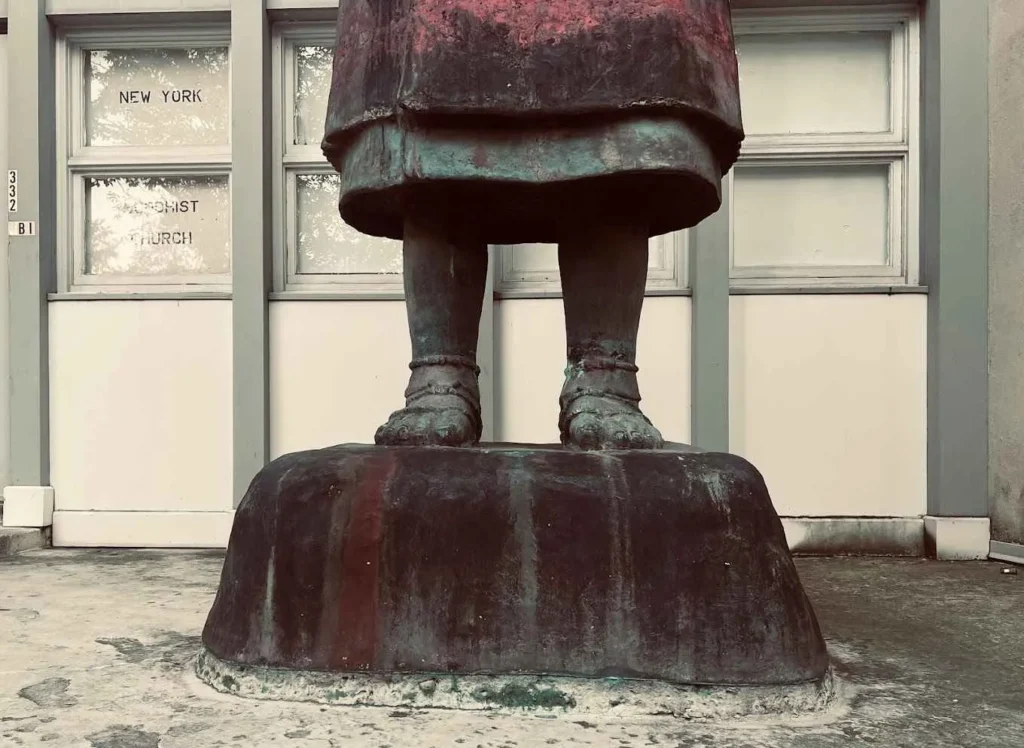In front of the New York Buddhist Church, in the heart of the city, stands a statue bearing traces of radioactivity caused by an atomic bomb.The statue represents Shinran Shonin, a 12th-century Buddhist monk and a central figure in Jodo Shinshu Buddhism. This imposing statue, rich in symbolism, tells a story not only of religious devotion but also of survival and hope in times of war.
Origin and Creation
The statue is one of six identical bronze pieces created between 1937 and 1938 by Japanese industrialist Mr. Hirose. Each statue, standing 15 feet tall and weighing approximately 1,300 pounds, represented a character of the Nembutsu: Namu Amida Butsu, the revered Buddhist chant. These statues were installed in key Japanese cities, including Osaka, Kyoto, Tokyo, Hiroshima, Niigata, and Mr. Hirose’s hometown, Kuwana, in Mie Prefecture.
Survivor of the Atomic Bombing
Of the six statues, three were destroyed during World War II when their metal was repurposed for the Japanese government’s war efforts. The statue located on a hill overlooking Hiroshima, however, survived the devastating atomic bombing on August 6, 1945.
The epicenter of the explosion was only a mile away, yet the statue withstood the full blast. Although it remained standing, it was marked by reddish burns and still retains traces of radioactivity. This fact turned the statue into a powerful symbol of resilience in the face of destruction.
How Did It Arrive in New York?
After the war, the statue was removed from Hiroshima by Mr. Hirose’s decision and replaced with a smaller version of a young Shinran. As a gesture of peace and reconciliation, Mr. Hirose sent the original statue to New York.
In 1955, the statue was installed in front of the New York Buddhist Church. The dedication ceremony, held on September 11, featured renowned Buddhist scholar D.T. Suzuki as the keynote speaker. This event marked the beginning of a new chapter for the statue, which became an emblem of peace in the American metropolis.
A Message of Hope
The statue’s journey to New York deeply resonated with Buddhist devotees in Japan. A letter sent to Mr. Hirose from Hiroshima reflected this sentiment:
“Upon reading about the statue traveling to America, I joined my hands in prayer. Our founder Shinran Shonin will now embark on a journey to distant lands to preach eternal prayers for world peace.”
Today, the statue of Shinran Shonin stands as a tangible reminder of the human spirit’s ability to endure adversity and advocate for peace. It is a symbol of cultural connection and a call for global unity in the face of shared challenges.
How to get there?
On the eastern side of Riverside Drive, between 105th and 106th Streets, in front of a Buddhist shrine.





